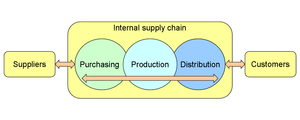For suppliers, the question of supporting EDI is often synonymous with asking if you want a particular customer. The majority of retailers, and an increasing number of up-chain suppliers are not willing to do business with suppliers that can’t transact business electronically - particularly via EDI. Margins are slim for nearly every market, and if there is any room for ‘additional’ profit, that isn’t a reason to leave expenses that can be reduced at the table. Those operating functions that can be made more efficient by implementing automated processes are going to be attacked and reduced whenever possible. And that means pushing trading partners to embrace efficient transaction methods - among other strategies.
So, is determining an ROI for EDI a realistic effort? In my view, there is a difference between finding a return on investment and maximizing the efficiency in terms of cost for a function like EDI. Presumably, the function of ROI is part of a decision making process - one that helps an organization determine whether its efforts and expenditures are worthwhile. This is far different from exploring options that lead to decisions about which processes, tools, and methods should be used to improve functionality of a given process.
I’ve heard discussions about analyzing the investment to be made on implementing EDI when a supplier is faced with the demands of a new or existing customer, and in those cases the ROI determination generally amounts to a question of whether the supplier wants to accept orders from this customer or not. That’s not to say there is no calculus in the process, but those calculations are fairly straightforward, amounting to comparing the expected profitability of the relationship to the startup and ongoing costs of an EDI enablement. In my view, given the wide range of options available, there are likely to be few cases in which the costs of enablement outweigh the profitability of the partnership.
The second evaluation - that of determining the most advantageous EDI tools and facilities available for a particular company - is a much more interesting and complex exercise, and one that should be taken on later in the life of the of a company’s EDI experience. But at that point the valuation is based on reductions in expenses, offloading of responsibilities, replacing older and possibly more complex systems, and many other factors. These issues are normal process lifecycle issues, and while there may be some way to judge a return on investment based on the changes being contemplated, the point of deciding whether the investment is justified has long since passed.
Is there an ROI to EDI? Whe question is more akin to asking whether a company needs to have a telephone. It’s unlikely that an active and growing company can survive and flourish without it. But there is a plethora of choices once the initial decision has been made.







